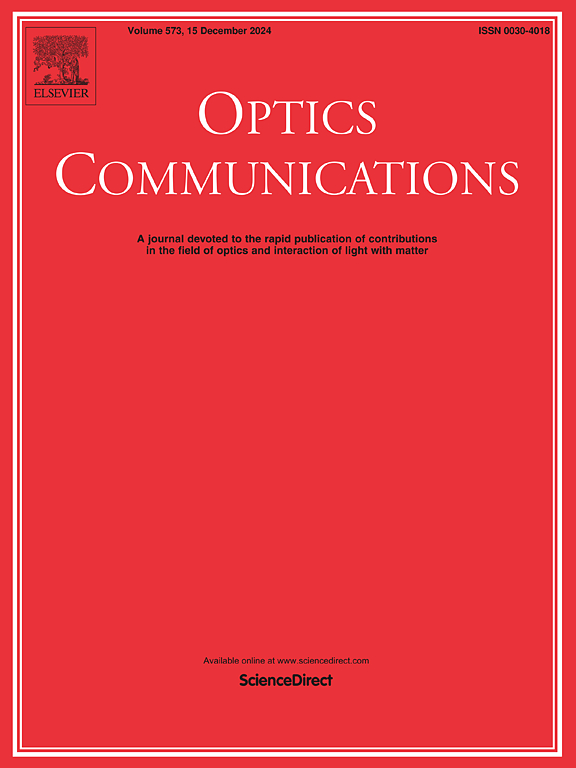Thin-Film Lithium Niobate (TFLN)-based multimode interference power splitter for multi-band operation
IF 2.2
3区 物理与天体物理
Q2 OPTICS
引用次数: 0
Abstract
This article leverages thin-film lithium niobate (TFLN) with low dispersion material properties and the order selection in self-imaging effect by critical dimension optimization to reduce the wavelength sensitivity of multimode interference (MMI) power splitters. We experimentally demonstrated two types of multi-band 3 dB 1 × 2 MMI power splitters: the dual-band device achieving synchronous operation in both O-band (1260–1360 nm) and U-band (1620–1650 nm), and the ultra-broadband device covering the entire communication band from 1260 nm to 1675 nm. The fabrication processing of the devices is compatible with wafer-level mass production technology. The dual-band MMI achieves excess loss (EL) ≤ 1.8 dB and imbalance (IM) ≤ 0.33 dB in the O-band, while demonstrating EL ≤ 0.42 dB and IM ≤ 0.24 dB in the U-band. The ultra-broadband one maintains EL below 0.38 dB across 1240–1650 nm, achieving a bandwidth coverage of 410 nm. This research successfully addresses the longstanding challenge of combined multi-band operation, low-loss, and manufacturing compatibility in traditional material platform, while providing critical technological underpinnings for next-generation high-capacity optical communications and coordinated multi-band transmission architectures.
基于薄膜铌酸锂(TFLN)的多波段干扰功率分配器
本文利用薄膜铌酸锂(TFLN)的低色散材料特性和自成像效应的关键尺寸优化中的阶次选择来降低多模干涉(MMI)功率分路器的波长灵敏度。实验展示了两种多频段3db 1 × 2 MMI功率分路器:在o波段(1260 ~ 1360 nm)和u波段(1620 ~ 1650 nm)实现同步工作的双频器件,以及覆盖1260 ~ 1675 nm整个通信频段的超宽带器件。器件的制造工艺与晶圆级量产技术兼容。双频MMI在o波段实现了过量损耗(EL)≤1.8 dB和不平衡(IM)≤0.33 dB,在u波段实现了EL≤0.42 dB和IM≤0.24 dB。超宽带天线在1240-1650 nm范围内保持EL低于0.38 dB,实现410 nm的带宽覆盖。该研究成功解决了传统材料平台中组合多频段运行、低损耗和制造兼容性的长期挑战,同时为下一代高容量光通信和协调多频段传输架构提供了关键技术基础。
本文章由计算机程序翻译,如有差异,请以英文原文为准。
求助全文
约1分钟内获得全文
求助全文
来源期刊

Optics Communications
物理-光学
CiteScore
5.10
自引率
8.30%
发文量
681
审稿时长
38 days
期刊介绍:
Optics Communications invites original and timely contributions containing new results in various fields of optics and photonics. The journal considers theoretical and experimental research in areas ranging from the fundamental properties of light to technological applications. Topics covered include classical and quantum optics, optical physics and light-matter interactions, lasers, imaging, guided-wave optics and optical information processing. Manuscripts should offer clear evidence of novelty and significance. Papers concentrating on mathematical and computational issues, with limited connection to optics, are not suitable for publication in the Journal. Similarly, small technical advances, or papers concerned only with engineering applications or issues of materials science fall outside the journal scope.
 求助内容:
求助内容: 应助结果提醒方式:
应助结果提醒方式:


